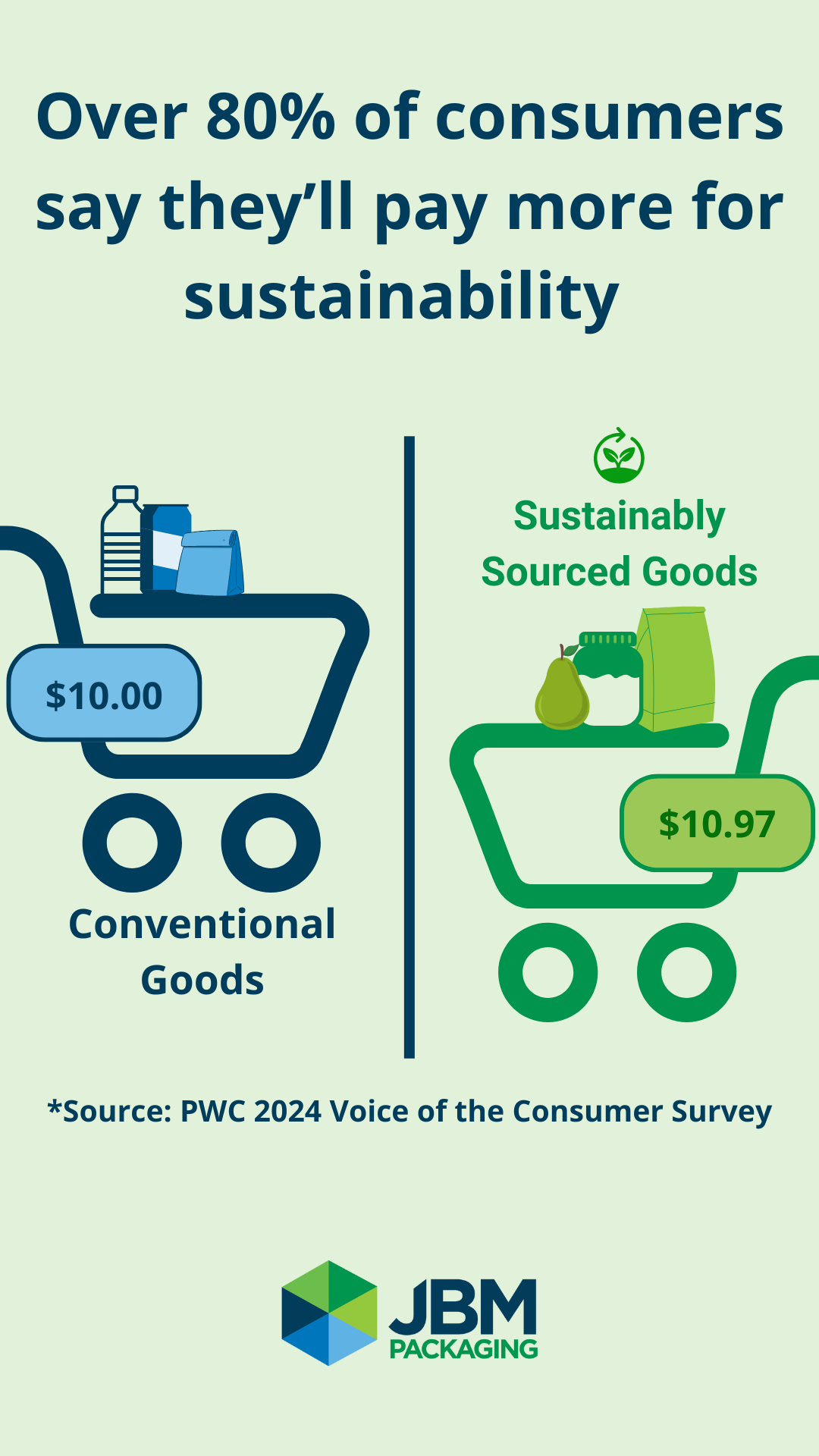The Business Case for Sustainable Packaging in Manufacturing: Where to Start and How to Convince Your Boss
When manufacturing companies think about sustainability, they often begin with obvious, more complex actions—building upgrades, water conservation and supply chain evaluations. These efforts can have a big impact, but they also take years and require significant investment. They can also be the first to be sidelined when more pressing priorities appear.
Another option is to start with a smaller environmental change—something that’s more manageable, but still creates an impact. Something like your packaging.
Before investing in a major ESG-driven capital project, start with a short walk through your facility. Chances are, you’ll spot a low-hanging fruit in plastic packaging, including zip-top bags, heat-sealed pouches, shrink-wrap or polybags used in kitting, assembly and storage. While each serves a purpose, these materials are often overlooked opportunities to cut waste and reduce your environmental footprint.
Swapping out the plastic packaging in your operations with recyclable paper alternatives is an easy first step in any sustainability program. Not only can it help reach waste reduction goals, but it is also easy to implement and increasingly aligned with both market expectations and legislative trends.
Small Changes with a Big Impact
Sustainability isn’t just a corporate buzzword; it’s an opportunity. In fact, as of April 2024, Amazon’s Climate Pledge Friendly program started fewer than five years ago and now includes more than 1 million products. This program aims to help consumers identify products with sustainable features, and is becoming increasingly important for Amazon sellers to achieve brand positioning for their products.
Whether you’re in marketing, operations or purchasing, you can take small steps to make your business more sustainable. One of the simplest and most effective changes? Transitioning from plastic to paper packaging.
Many prominent brands, from Patagonia to Lush, have made eco-friendly packaging a core part of their sustainability commitments. It’s for good reason: packaging is often the first thing your customers touch, and is increasingly subject to regulatory oversight. Making the switch now can help your business stay ahead of the curve.

To build the case for transitioning to more eco-friendly packaging, clarify how a shift to sustainable packaging will align with key business goals. Typically, we’ve found that our customers adopt eco-friendly packaging for one of these reasons:
- Cost Savings. While the upfront cost may be higher, paper packaging may lead to long-term cost savings in logistics, operational efficiency and customer retention. This is particularly true when you can find a packaging supplier that can also fill packaging, reducing transportation needs and simplifying the packaging process.
- Meeting Consumer Demand. Studies show that consumers want sustainable packaging so much that they’re willing to pay a premium of above 10 percent or more for eco-friendly options. Even if your customers don’t directly see the packaging used in your operations, reducing plastic waste contributes to environmental savings, strengthens your corporate sustainability efforts, enhances brand reputation and fosters stronger customer loyalty.
- Regulatory Compliance. Across the country, Extended Producer Responsibility (EPR) legislation targeting plastic packaging to reduce waste. Getting ahead of this curve will help reduce the opportunity for costly last-minute changes and position your company as a leader in your industry.
- Brand Leadership – The top brands aren’t just reacting to sustainability trends; they’re setting them. Establishing eco-packaging as part of your brand identity defines your leadership while others play catch-up. This reinforces credibility with customers and prepares your company for future growth.
Reduce, Replace, Reuse? Finding the Right Balance
Not all plastic packaging is bad, and it’s important to evaluate the function of your packaging before making a switch. Consider a balance that meets your goals—reducing waste, improving recyclability or building customer trust and loyalty. No one-size-fits-all solution exists, but you can find the right approach for your operation.
Reducing Packaging: When we talk with customers about lightweighting, we evaluate and test the packaging to see if we can eliminate unnecessary materials. This can reduce costs and still protect the product. For example, if you’re shipping a product inside a durable cardboard box, your primary packaging doesn’t need to be as thick and heavy.
Replacing Packaging: Switching from plastic to paper? Consider where and how your product is handled. For example, suppose your product will be exposed to environments with water or humidity, such as a greenhouse. In that case, consider switching from plastic packaging to a paper package with moisture-resistant properties. With the right material, you can maintain functionality while improving sustainability.
Reusing Packaging: As we look ahead to 2030, more companies have set goals around circularity. Reusable packaging options—like durable glassine bags that can cycle through multiple uses—are gaining traction. These solutions are particularly relevant in internal supply chains or subscription-based delivery models. While this can require a bigger upfront investment, it can significantly reduce long-term waste and costs.
Getting Started: Making the Case to Your Boss
If your leadership needs some convincing, remind them:
- Not all packaging needs replaced, but evaluating its current usage can reveal opportunities to reduce waste and costs.
- Evolving EPR legislation may not impact you now, but preparing now can prevent future compliance headaches.
- You don’t need to go it alone. A knowledgeable packaging partner can provide insights, cost-saving strategies and support to make the transition smoother and more efficient.
Start small, focus on cost-effective alternatives, and focus on the areas where sustainable packaging can have the most impact. The shift is happening—are you ready to lead the way?
